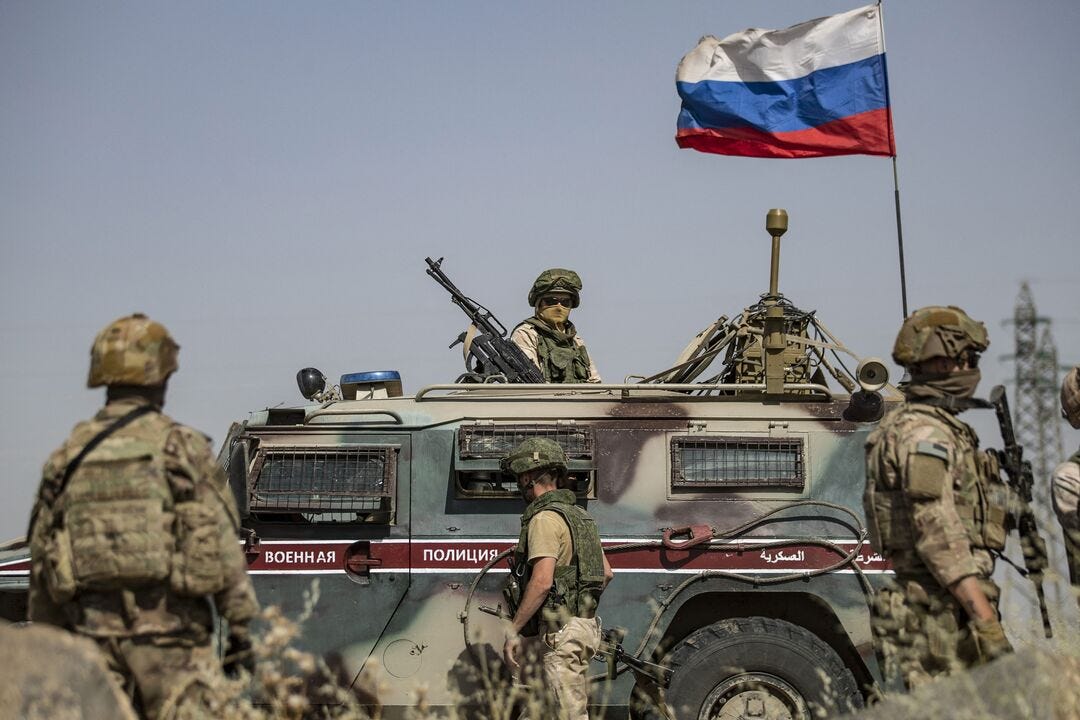Russia is quietly turning Libya into its new Syria
For Moscow, Tripoli is the best alternative to what it lost in Damascus.
The collapse of Bashar al-Assad in December 2024 marked a serious blow to Russia’s influence in the Middle East.
For over a decade, Moscow had propped up Damascus throughout its crippling civil war, from countering Kurdish rebels to bombing Islamic State targets.
However, Russia’s commitment to protecting Syria was not driven by any personal affinity between Putin and Assad. Rather, Syria was a cornerstone of the Kremlin’s Middle East strategy due to its hosting of the Tartus and Khmeimim military bases.
Tartus, established in 1971, is Russia’s only naval base outside its borders. It provided Moscow with a strategic foothold in the Mediterranean, enabling power projection against rivals such as Turkey, Ukraine, NATO, and the European Union. According to Catrin Schaer, Russian activity at Tartus increased in the lead-up to its 2022 invasion of Ukraine, “to counter, deter, and monitor any NATO operations in the Mediterranean.”
Khmeimim, established in 2015, hosts critical Russian aerial assets and serves as a launchpad for Russian allies and proxies, including the Wagner Group.
Both bases have been critical to Russian military operations not only in Syria, but even in Africa. For instance, weaponry from Moscow has been transferred to the Wagner Group in West Africa through Khmeimim.
With Assad’s regime fallen, the fate of these two bases—and Russia’s foothold in the Middle East—remains uncertain. As a result, the Kremlin appears to be seeking alternatives—and North Africa has emerged as a likely candidate.
A report by Radio France Internationale (RFI) investigated the recent voyage of a Russian Antonov An-124 cargo plane to Libya.
Utilizing satellite imagery and flight radar data, RFI tracked the aircraft’s journey from Khmeimim to Al-Khadim airbase in Libya, located roughly 100 km east of Benghazi, the stronghold of Russian ally Khalifa Haftar.
From there, the plane embarked on a 10,000 km journey, stopping in both Mali and Burkina Faso before eventually returning to Russia.
Although the exact nature of the aircraft’s cargo is unknown, Abdulkader Assad of the Libya Observer speculates that it was transporting heavy weapons systems—such as air defense platforms and armored vehicles—given the aircraft’s large capacity.
Russia has floated the idea of establishing a military base in Libya since at least 2008. Tripoli now presents a compelling alternative to Damascus for several reasons.
Firstly, Libya lies along the Mediterranean Sea, allowing Russia to maintain maritime access and continue projecting power in the region, much as it did from Syria.
Secondly, Libya’s proximity to Western Europe enables Russia to sustain its deterrent posture against the EU and NATO, which have grown increasingly hostile to the Kremlin since 2022.
Lastly, Libya’s fractured political landscape—contested by various foreign powers including Turkish-backed factions—presents Russia with an opportunity to assert influence by backing Haftar and establishing a permanent presence.
However, transitioning from Syria to Libya will be far from straightforward. The country remains politically fragile after more than a decade of conflict and remains divided between eastern and western factions. Though the civil war officially ended in late 2020, tensions persist, and many fear the eruption of renewed fighting.
Moreover, while the U.S. has historically opposed Haftar’s role in the Libyan crisis, it has recently stepped up diplomatic efforts to draw him away from Moscow’s orbit.
Finally, although Libya offers a geographically shorter route for Russian military assets, logistical challenges remain. The Kremlin-linked Rybar Telegram channel notes that only empty cargo planes can travel the route from Russia to Libya without refueling.





